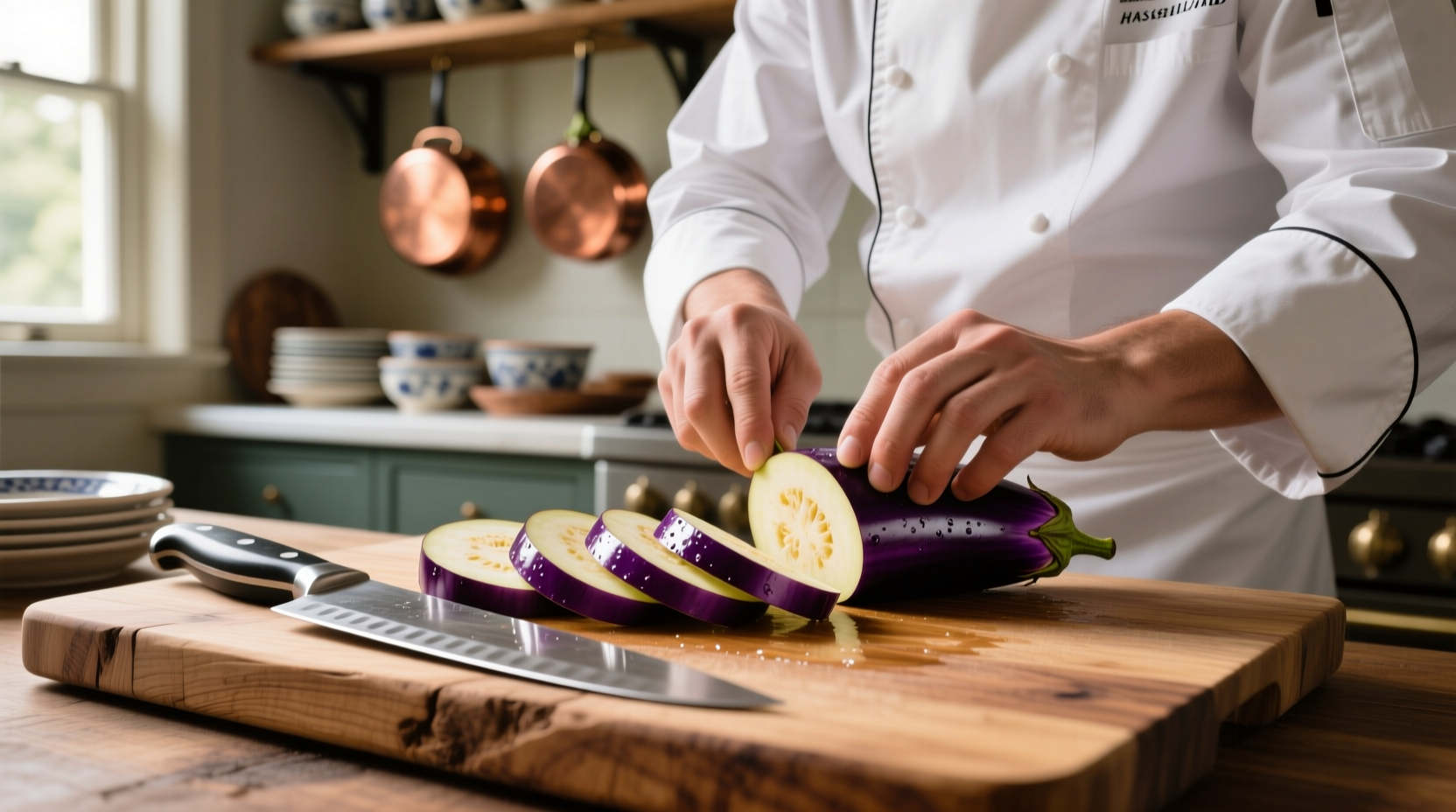Why Proper Eggplant Preparation Matters
Many home cooks struggle with eggplant because they skip essential preparation steps. Without proper technique, eggplant can turn out bitter, soggy, or unevenly cooked. The key is understanding that eggplant's spongy texture absorbs oil like a sponge, while its natural bitterness varies by variety and freshness.
Essential Tools for Eggplant Preparation
Before you begin, gather these kitchen essentials:
- Sharp chef's knife (dull knives crush eggplant)
- Colander for salting process
- Paper towels for moisture absorption
- Baking sheet if roasting
- Cutting board dedicated to vegetables
Step-by-Step Eggplant Preparation Process
Selecting the Perfect Eggplant
Start with quality selection. Look for firm, heavy-for-their-size eggplants with smooth, shiny skin. Avoid those with soft spots, wrinkles, or discoloration. The stem should appear fresh and green. Smaller eggplants typically have fewer seeds and less bitterness than larger, mature ones.
Washing and Inspection
Rinse eggplants under cool running water, gently scrubbing the skin with a vegetable brush. Inspect for any blemishes or soft spots. Unlike many vegetables, eggplant skin is edible and contains valuable nutrients, so avoid peeling unless your recipe specifically requires it.
| Preparation Method | Best For | Time Required | Key Benefit |
|---|---|---|---|
| Salting | Frying, sautéing | 30-60 minutes | Reduces bitterness, prevents oil absorption |
| Roasting whole | Dips, spreads | 20-30 minutes | Concentrates flavor, easy flesh removal |
| Blanching | Layered dishes | 5-8 minutes | Preserves shape, reduces cooking time |
| Direct cooking | Grilling, broiling | Immediate | Maintains texture, ideal for fresh eggplant |
Salting Technique: When and How to Use It
While not always necessary with modern eggplant varieties, salting remains valuable for certain preparations. Here's the professional approach:
- Cut eggplant as directed by your recipe (cubes, slices, etc.)
- Place in colander and generously sprinkle with kosher salt (about 1 tablespoon per medium eggplant)
- Toss to ensure even coating and let sit for 30-60 minutes
- Rinse thoroughly under cold water to remove excess salt
- Press between paper towels to remove moisture
According to research from the University of California Agriculture and Natural Resources, salting draws out moisture and bitter compounds through osmosis, resulting in better texture for frying. Source
Cutting Techniques for Different Dishes
Your cutting method depends on the final dish:
- For Baba Ganoush: Roast whole until collapsed, then scoop out flesh
- For Ratatouille: Uniform 1/4-inch slices for even cooking
- For Stir-fries: 1-inch cubes with skin on for texture retention
- For Grilling: 1/2-inch thick rounds, scored on one side

Preventing Sogginess: The Professional Secret
The number one mistake home cooks make is allowing eggplant to absorb too much oil. Professional chefs use these techniques:
- Salt and thoroughly dry eggplant before cooking
- Use high heat to create a quick sear
- Cook in small batches to avoid overcrowding
- Try the microwave method: arrange slices on paper towels and microwave for 5 minutes before cooking
When to Skip Salting
Not all eggplant preparations require salting. Skip this step when:
- Using Japanese or Italian varieties (typically less bitter)
- Grilling or roasting whole eggplants
- Using eggplant immediately after purchase (fresher eggplant is less bitter)
- Preparing dishes where some bitterness complements other flavors
Storage Tips for Prepared Eggplant
If you've prepared eggplant but aren't cooking it immediately:
- Place in airtight container with paper towels to absorb moisture
- Store in refrigerator for up to 24 hours
- Do not freeze raw prepared eggplant (texture deteriorates)
- For longer storage, cook eggplant first then freeze
Common Eggplant Preparation Mistakes to Avoid
Avoid these pitfalls that ruin otherwise good dishes:
- Using a dull knife that crushes the flesh
- Skipping the drying step after salting
- Cooking at too low temperature
- Overcrowding the pan during cooking
- Peeling unnecessarily (most nutrients are in the skin)
Perfect Eggplant Every Time: Pro Tips
Professional chefs recommend these advanced techniques:
- Sprinkle cut surfaces with lemon juice to prevent browning
- For even better results, try the "sweating" method: salt, then place under weighted plate for 30 minutes
- When roasting, flip eggplant halfway through for even cooking
- Combine salting with a quick vinegar soak (1 tablespoon vinegar per cup of water) for optimal texture











 浙公网安备
33010002000092号
浙公网安备
33010002000092号 浙B2-20120091-4
浙B2-20120091-4